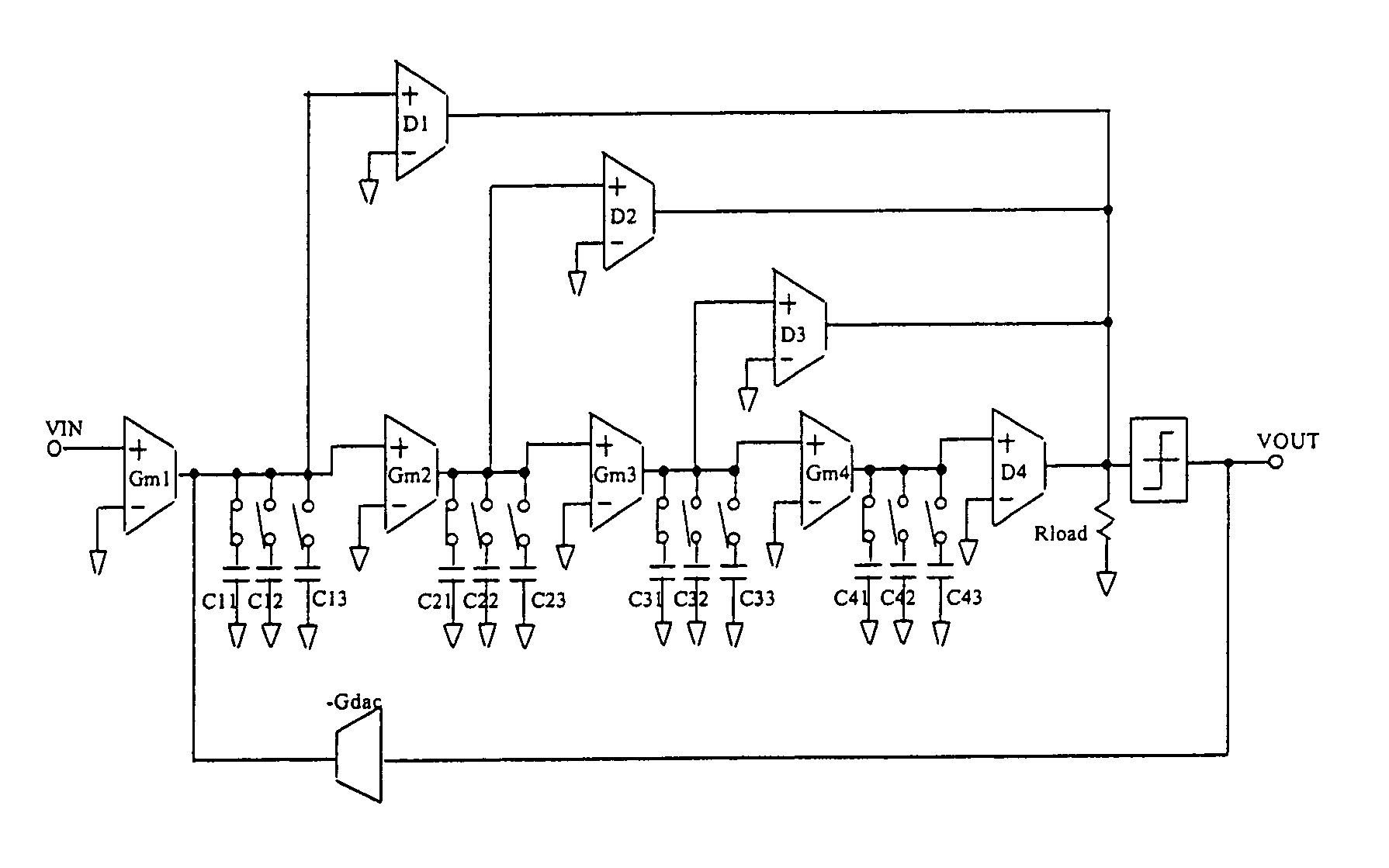Process variation trim/tuning for continuous time filters and Delta-Sigma analog to digital converters
a continuous time filter and process variation technology, applied in the direction of oscillator, pulse manipulation, pulse technique, etc., can solve the problems of affecting the noise performance of the overall filter/modulator, and inefficient implementation
- Summary
- Abstract
- Description
- Claims
- Application Information
AI Technical Summary
Benefits of technology
Problems solved by technology
Method used
Image
Examples
Embodiment Construction
[0014]The present invention can trim / tune the corner frequency of continuous-time filters and Δ-Σ ADCs with respect to process variations causing resistance and capacitance variations. It can ensure the desired frequency response of a continuous-time filter and / or make a continuous-time Δ-Σ ADC coupled to the filter stable and achieve optimum dynamic range. The present invention also allows changing the corner frequencies of the filters in accordance with different standards in a multi-band / multi-corner (multi-standard) frequency application such as wireless cellular. The principle of the present invention can also be applied to any continuous-time filters which utilize a feed forward, feedback or both topologies.
[0015]An exemplary feed-forward filter, specifically a 4th order filter, may be seen in FIG. 1. Also shown in this Figure is a Δ-Σ ADC coupled to the output Y of the filter. The GM / SC elements of the filter may be realized in various ways, such as, by way of example, by an ...
PUM
 Login to View More
Login to View More Abstract
Description
Claims
Application Information
 Login to View More
Login to View More - R&D
- Intellectual Property
- Life Sciences
- Materials
- Tech Scout
- Unparalleled Data Quality
- Higher Quality Content
- 60% Fewer Hallucinations
Browse by: Latest US Patents, China's latest patents, Technical Efficacy Thesaurus, Application Domain, Technology Topic, Popular Technical Reports.
© 2025 PatSnap. All rights reserved.Legal|Privacy policy|Modern Slavery Act Transparency Statement|Sitemap|About US| Contact US: help@patsnap.com



